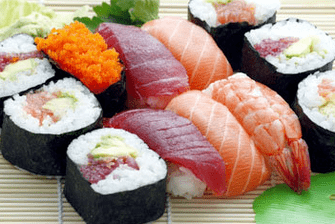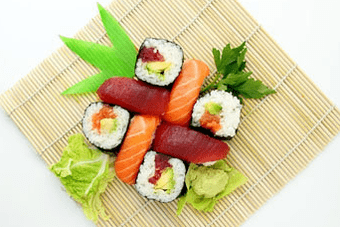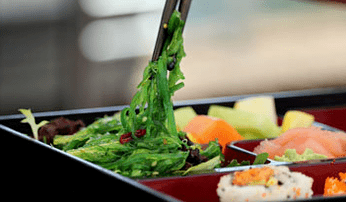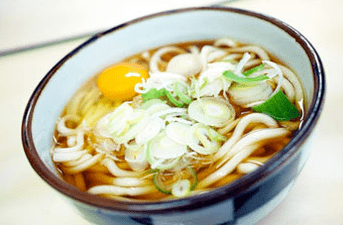The Japanese are still one of the worst people in the world.Looking at their diet shows why this is how we can benefit from this.
If we want to lose weight, we often start with a strict diet, which is then not implemented in a few days or weeks for all strict rules.In fact, it's so easy: let's see the worst person - in Japan.
There they treat food with respect and enjoy it.

Japanese diet
Travel to Japan.Product choice
Numeroussquirrel: The main ingredients of the Japanese diet are fish, rice and vegetables.As well as soy and fruits.
After a closer examination, this is like
- rich in protein,
- low -fate
- And a gluten diet.
- FishContains many useful omega-3 fatty acids.
- VegetablesThey contain the vitamins they need and fill the stomach well.
- Don't be afraid of carbohydrates: at first glance it seems to be with carbohydrate phobias where the incredible amount of white rice is eaten in Japan.Obviously, this is not too dangerous to weakness.RiceIt contains no gluten and contains a little fat.
- Soupand the milk products are consumed.That they don't eat in Japan isDairy products.
- DespitecerealSometimes they are used, for example, in the form of pasta, they are not the main food products.
- MeatThey eat less than fish.
- But the Japanese loveEnzyme productsSuch as miso or kimchi.They contain probiotics that are useful for the intestines.This, in turn, plays a major role in weight loss.And another thing we can wear from Japan: they eat a lot of soup even for breakfast.
Travel to Japan.Cooking method
In Japan, food is mainly steamed, boiled or grilled.All of these types of preparations are carried out almost lean.
Of course, there are also fried foods, for example, a popular tempo, but then it is used as a side dish only in small quantities.In Japan, presentation and dish design are also important.Asian products are useful, delicious and contribute to weight loss.
In Japanese, eat consciously
In Japan, food is considered an independent act where you must concentrate.Food should be eaten slowly and consciously and enjoy it.Therefore, it is traditionally not eaten "by" or "goes".That is, during walking, or in the subway, or during work, or while watching TV.Of course, this is not prohibited, but, in fact, diet, especially when losing weight, should be done consciously.With this method of absorption of food, the feeling is full.Since work days and school days in Japan can be very long, it also means there is longer rest for food.AlsosectionLess in Japan.You won't see the dishes buried with food.

Weight is equipped with fast food
Slow food (slow food)In Japan in the trend.If you imitate this, you can lose weight intentionally, not starving.However, it should be noted that in Japan more and more from the west of the new trend: fast food, for example.Previous habits in lost food ...
This has the effect: Japan also recovers when they say goodbye to their traditional food!However, the country is also struggling with this, Japan in 2009 took the strict steps on the causes of weight gain.Medical tests are often conducted in all municipalities and large companies.Companies will have to pay more for medical insurance if their employees are overweight or with high blood pressure, high blood lipids or increased blood sugar.Given these measures, many Japanese people prefer to return to miso-Supa with fish instead of toasts in the morning.
How long does the Japanese diet survive?
Time and possible weight loss can vary.The Japanese diet should be observed for at least four weeks.This time it is enough to stimulate fat burning.Some people have lost3to8One kilogram in four weeks with a diet.The results can be further enhanced if you start a sports program.
- During the diet, many vegetables and fibers are used.The diet plan provides1200 caloriesa day.
- It is primarily suggested by rice, fish and vegetables.
- Drink: lots of green tea and water.
- Take care of fresh dishes - no products ready.
- Take a sport or train for durability.
- Plan enough time to cook.
Consult your doctor.- Any changes in the diet can cause disease.The reason is that it is mental and is due to low calorie consumption.Consult your doctor if symptoms are preserved.
The advantages of the Japanese diet
Japanese diet- This is a healthy mixed diet.Much attention is given to fresh products and a balanced dish composition.
Disadvantages of the Japanese diet
- Low calorie consumption, this can cause hunger and hunger.For overweight people, the amount of calorie consumption can be too low.
- Cooking fresh dishes can be boring in the long run for those used to feed fast food.
- Spontaneous visits to cafes or restaurants with friends are faced with options.
- Diet requires a lot of endurance.

But those who have successfully completed the Japanese diet will be rewarded with more overweight.
If you want to see great success, create a sports program.Be sure to take enough protein.If not, you cannot increase muscle mass.In the worst case, you will lose your muscles.Bad sports and other big burdens should be avoided.
Japanese diet.Menu
All food should be fresh.The dish is cooked beautifully, you can play with flowers.Food and enjoyment of food (slow absorption of food) is also very important.
Breakfast
- 1 tangerine
- 1 cup of miso.This typical Japanese soup provides a lot of energy, but it is low in fat.In this way, it consists of fish soup, tofu, algae, miso (flavored soy patches) and green onions.The recipe below!
- 1 cup of green tea
Dinner
- 1 plate of ground (raw fish with rice), with soy sauce
- a cup of noodles with mushrooms
- 1 apple
- A cup of green tea
Dinner
- 1 part sashimi (other fish dishes), soy sauce and basabi (careful, this paste is made of very acute water)
- 1 cup of grain rice
- 1 orange
- A cup of green tea
In addition, training is recommended (walking or riding a bike), as well as the fun of things that are simple and small.
And now about "good old old" - let's make a trip in time, in 1975
The Japanese are one of the healthiest people in the world for a long life, where they remain dangerous due to exemplary nutrition.Currently, Nippon.com has published a study where it allows for good Japanese health with their nutrition.Nutritionists have studied Japanese food habits for over half a century.The result is:In 1975, Japanese cooking habits were appreciated by the highest assessment.
Why the Japanese diet of 1975 was considered a diet model
For decades, Japanese culture has been influenced by the Western world, in particular, the habit of Western power spread in the country, and has also brought them diseases such as atherosclerosis and diabetes.Studies in which the Japanese diet in mice were tested for decades - in 2005, 1990, 1975 and 1960.
The result is:Mice have the best health conditions with a diet plan in Japan since 1975. This group of mice has the lowest risk of diabetes and a healthy heart.
Reason:The average Japanese diet plan contains most of the vegetables, fruits, algae and seafood this year.In addition, in 1975, the diet was dominated by various spice -spice methods and a variety of larger herbs.In addition, the use of juices and sweet drinks at that time in Japan was not as common as today - both drinks are considered dangerous to health in large quantities.
After 48 weeks, researchers found that mice, powered by the Japanese diet in 1975, were older and had better memory than mice observing the 2005 diet.
But is it possible to convey this result to people?A study conducted by the University of Tokhoki Studies Committee in Sendai, Japan, "Research Ethics Committee" Der Tōhoku Uni, Sendai, proves that the 1975 diet has the same effect on the people.And a group of participants following the 1975 diet in 28 days beyond the guidance of those following the 2005 food plan. In the first group, lower cholesterol, and diabetes risk.In combination with one training three times a week, the 1975 diet also reduced stress and increased durability in the group of participants aged 20 to 30.In general, nutrition in Japanese style can also help reduce the level of lipids in the blood and fats of suffering, which is considered dangerous to health due to its metabolic activity.
Summarize, we can say thatJapanese power 1975Compared to modern nutrition in Japan - and typical for the West, today's food habits are more useful in many aspects.This healthier lifestyle and nutrition reduce the risk of diabetes, long -term cholesterol, reducing blood lipids and visceral fat, weight loss is a positive side effect.

The 1975 diet, together with normal physical training, contributes to weight loss.
- Diversity:The daily menu usually consists of many small dishes served with soups and rice - not a large main dish.
- Setup:The three most popular types of dishes prepared in 1975 were boiled, steamed or raw, also roasted.The heat of freedom and the grill is used less frequently.This form of preparation has the result of the fact that the most important nutritional value is lost in heat.For example, oily fish, such as COD, contain essential omega-3 fatty acids.After frying, the fish contains only one -third of the early fat compared to the raw fish, such as sashim.
- Materials:The 1975 diet is rich in soy products, seafood, sweet potatoes and vegetables -green and yellow (including rnicons), fruits, algae, mushrooms and green tea.Eggs, dairy products and meat were also eaten in 1975, but only in moderate quantities.
- Spice:From salt and sugar to taste, soy sauce, vinegar and sake, spice -spice and fish soup are used.
Miso soup- This is a Japanese national dish, quickly preparing and very aromatic.The main recipe contains very few ingredients - you can enrich them as you wish.Miso-Suup is often eaten for breakfast in Japan, but also for snacks or side dishes.By filling, the soup is the main dish.
As the basis for soup, you only need two ingredients:
Mizopasta:This spicy paste is made up of soybeans and - depending on various types of cereals, such as rice or barley.The ingredients are salty and are sourced in the barrel with the help of coji prints.There are light and dark miso pasta, sweet and sharp.Therefore, various choices have a huge impact on the taste of miso soup.Mizopasta is considered very useful as it contains probiotic lactic bacteria formed during fermentation.Dasha:Japanese fish milk is prepared from the battle of seaweed and dried bonito fragments (macarel or tuna: "katsuo-bushi"-"katsuo-busi").If you want to cook a miso vegetarian soup, you can use dried shiitaka and, perhaps, Maitaka mushrooms or Enoki instead of bonito fragments.
Miso soup: Basic recipe
For four small portions of miso soup, you need the following ingredients:
- 750 milliliters dasha
- About two or three tablespoons of miso-mites
Use your choice of miso-posts: besides soy, shiro-miso also contains rice and has a relatively soft and sweet taste.Darker miso varieties, such as genmai or hatcho miso, are more spicy.
How to cook miso soup
-
Heat a dasha soup - but not cooked.
-
Skip the miso-pass through the sieve and stir with the soup.First, use only part of the quantity, as the paste of Miso has a very salty taste.Try the soup, and then add more to the miso pasta, if necessary.
-
Enter your choice of ingredients in the mistake in minutes before serving.Serve the ready -made soup in a bowl.In this way, in Japan, the soup is eaten with a stick for food, and then the soup is drunk from the cup.
Miso soup recipe: additives and flavors
For your soup, you can provide different ingredients.In Japan, a lot of attention is given to the fact that the ingredients are cut evenly - so the soup is ready to look very beautiful.Here are some examples to enrich your soup:
- Rice or cooked paste (eg, a buckwheat dog noodle)
- Tofu sliced by cubes
- Onions or green onions, cut a thin ring
- Mushrooms, finely chopped
- Kohlrabi, finely chop
- Part of the snow
- Spinach leaves, Choi garden or mangold
- Fried vegetables such as broccoli, pepper or carrot

Although the miso soup is very sharp in itself, it can be boiled with some spices.For example:
- soy sauce
- A little like a lime
- Japanese wostershire sauce
- some drops of sesame oil
- Small ginger powder and / or pepper.
- You can also cut fresh ginger and / or pepper into thin slices and leave the soup.
Advice:For many ingredients, you need to go to the Asian store, but in the regional market you can buy fresh onions, mushrooms, kohlrabi and co.
Tofu and other soy products are also manufactured in other countries.
Japaneat:
- rice, fish (raw and cooked), vegetables, all and algae
- Small
- a variety of foods (up to 30 different a day)
- For breakfast soup, fish, rice, vegetables
- Fresh seasonal raw products
Barely eating desserts don't eat bread
Drink mainly green tea
Do not fry in oil, use just a little vegetable oil to fry
They go a lot and go to the bike
The top three products
Rice/fish (algae)/soy (tofu)
Drink: Green tea
And a secret again from Japanese
Want to be thinner at 12 cm waist?- If so, do the following breathing exercises!
IMPORTANT!
- Do it every day!
- Do it before breakfast!
- Never in a hurry!
- The feet put each other at an easy distance.Knee, of course, "see" forward.
- Move weight to the back foot, straighten the front.
- Pull for 3 seconds.
- Exhale for 7 seconds.Relax the muscles.Ripping your hands.
Exercises do in early 3 minutes, then increase to 10 minutes.















































































